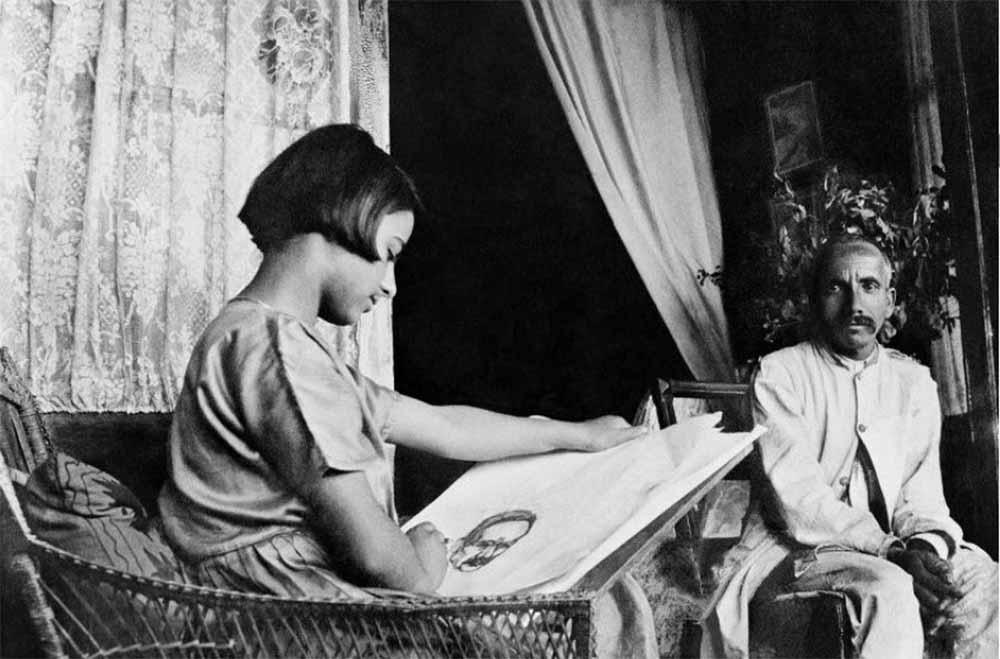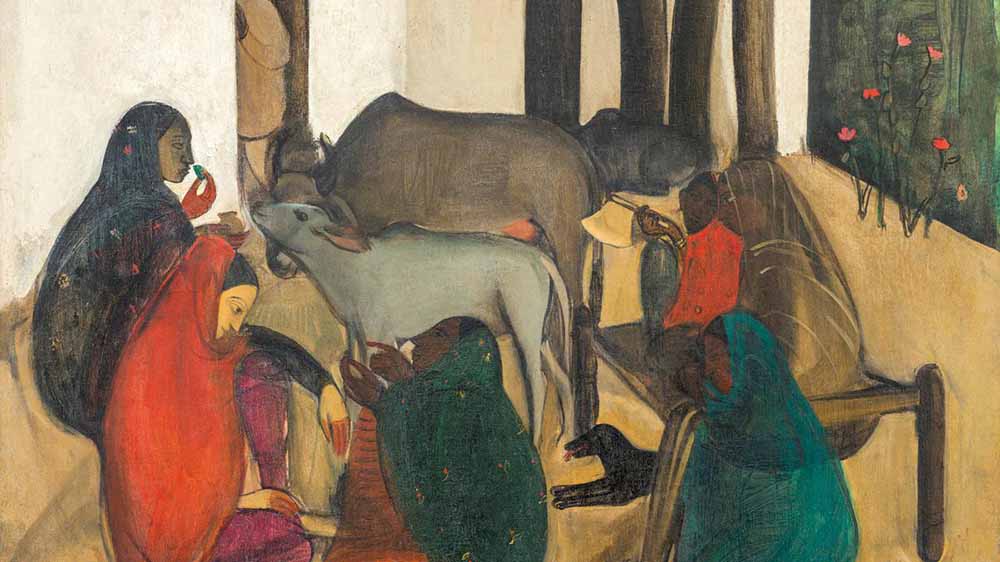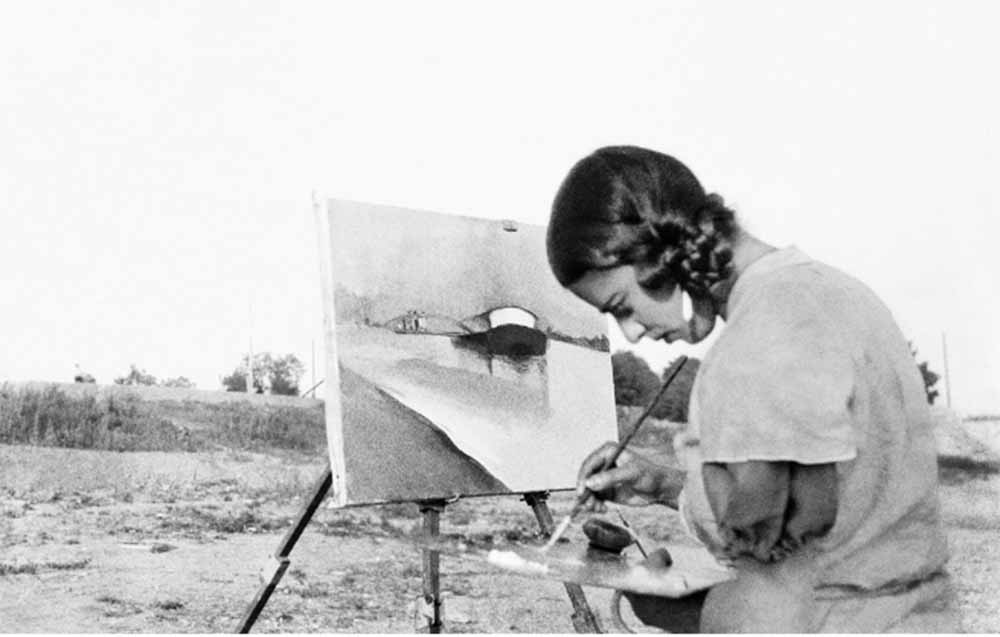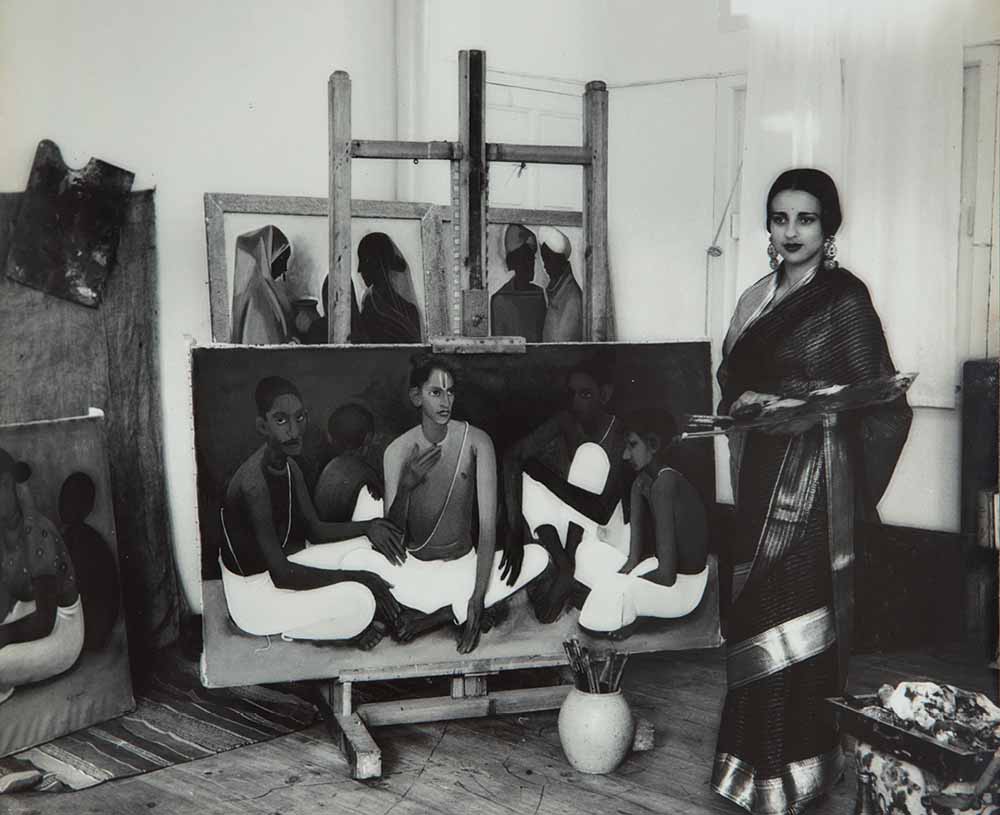As Amrita Sher-Gil’s ‘The Story Teller’ achieves a record-breaking price, her life and art remain a testament to her ability to transcend boundaries, both cultural and artistic. In the art world, where colours speak louder than words and strokes convey untold stories, Sher-Gil emerges as a luminary whose canvas reflects a life lived between worlds. In October 2023, at a recent Saffronart auction in New Delhi, her magnum opus, 'The Story Teller,' achieved an unprecedented feat by fetching a staggering INR 61.80 Cr, setting a new milestone in Indian art.

Amidst the vibrant colours and poignant expressions, Sher-Gil's legacy lives on, challenging conventions, questioning identities, and weaving an indelible drapery that transcends time. In the symphony of her art, she invites us to delve deeper, encouraging contemplation of the human experience, cultural amalgamation, and the timeless power of storytelling through paint and canvas.
Each stroke on her canvas is a complex brush, a reflection of her inner struggles and the silent battles faced by Indian women in the 1930s, often revealing a sense of their loneliness and even hopelessness.
On her birthday, let's delve into Sher-Gil’s enigmatic life and profound artistic contributions, tracing the journey that led to the creation of India’s most expensive painting.
A Journey Marked By Brevity, Yet Brimming With Fulfilment

Amrita Sher-Gil's story begins in Budapest on January 30, 1913. Born to a Hungarian-Jewish opera singer, Marie Antoinette Gottesmann, and a Sikh scholar and photographer, Umrao Singh Sher-Gil Majithia, her early years were marked by a fusion of cultures.

At the age of eight, her family moved to Summer Hill, Shimla, in northern India, where she began formal art lessons, laying the foundation for a remarkable artistic journey.
Amrita's artistic prowess led her to Paris at the tender age of sixteen, where she continued her studies at the École Nationale des Beaux-Arts.

Early success followed, as her 1932 painting, 'Young Girls,' earned a gold medal at the prestigious Paris Salon in 1933. The canvas depicted her sister, Indira, exuding confidence, sitting alongside a partially undressed friend, Denise Proutaux, reflecting the bold and reserved facets of Sher-Gil's personality.
The Masterpiece: 'The Story Teller'

Painted shortly after her return to India, 'The Story Teller' stands as a pivotal work in Sher-Gil's oeuvre. Executed en plein air (in the open air), a rarity in her portfolio, the painting captures the essence of rural Indian women engaged in domestic activities. Set in the countryside at her uncle's estate in Saraya, Uttar Pradesh, the artwork reflects Sher-Gil's keen observation of women's lives.

This painting is one of the twelve works selected by Sher-Gil herself as her most important piece, indicating its significance. Her correspondence frequently mentioned 'The Story Teller' as a work of particular importance, showcasing her deep connection to the subject matter.
Exploring Identity: The Complex Self-Portraits

Sher-Gil's self-portraits stand as powerful reflections of her internal conflicts and a quest for identity. 'Self Portrait as Tahitian' echoes the style of French post-Impressionist Paul Gauguin, portraying Sher-Gil's own brown body in Gauguin's stylisation of the female nude. The painting captures a sombre expression, revealing her introverted and troubled psyche, caught between her Hungarian and Indian existences.

Exploration of her sexuality further adds complexity to her self-portraits. Her connection with painter Marie Louise Chassany led to speculations about a possible intimate relationship, notably portrayed in the piece 'Two Women,' believed to reflect their longing for one another. Sher-Gil, torn between societal conventions and her view of womanhood as a liberated individual, left behind a legacy of art that transcends mere aesthetics.
The Unfulfilled Years In Paris And The Call Of India

Despite accolades in Paris, Sher-Gil felt a haunting longing to return to India, sensing that her destiny as a painter lay within its vibrant landscapes. In 1935, she answered this call, embarking on a transformative journey across the country. Her family's ties to the British Raj did not deter her sympathy for the Indian National Congress, advocating for the rights of those seeking independence from British rule.

During this period, Sher-Gil's artistic mission crystallised – to interpret the life of Indians, particularly the poor, and paint images of infinite submission and patience. Her technical style evolved to become more fundamentally Indian, marking a significant shift in her artistic expression.
The Legacy Lives On

Amrita Sher-Gil's untimely death in 1941, at the young age of 28, deprived the art world of a star on the rise. However, Sher-Gil's legacy has grown exponentially in recent years. In 2013, UNESCO declared the 100th anniversary of her birth as the international year of Amrita Sher-Gil, acknowledging her profound impact on the world of art. Her evocative paintings, marked by honesty and depth, inspire artists globally.